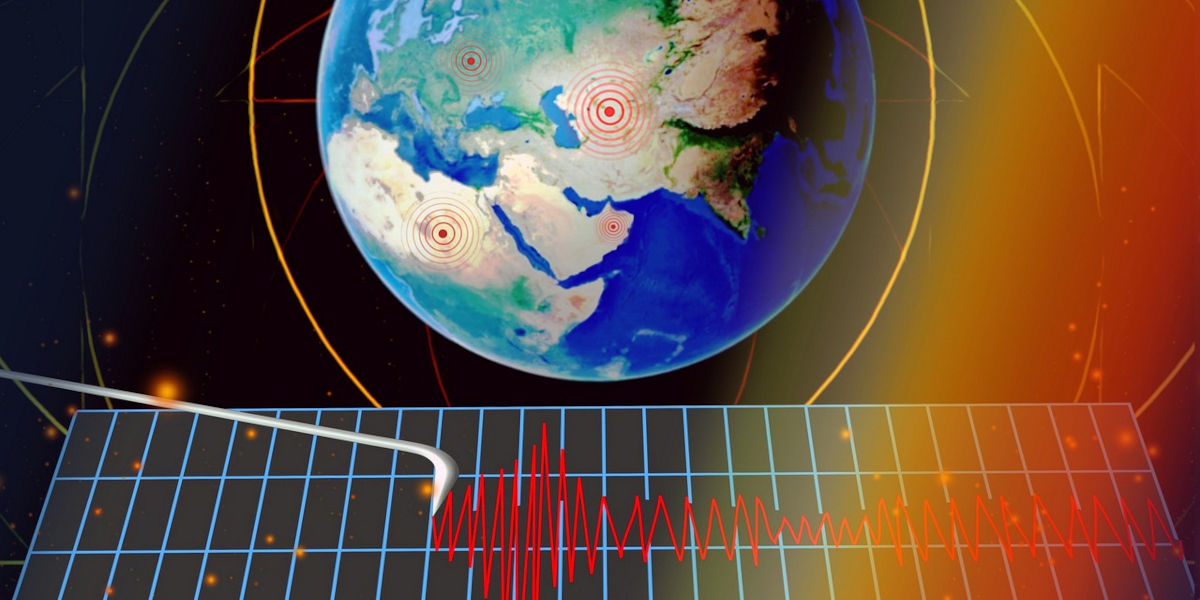For millenniums, earthquakes have rattled our civilization, causing widespread damage and loss. These natural disasters prompt awe and provoke fear, as they are sudden and unpredictable. This article aims to delve into the topic of what causes earthquakes and aid in understanding seismic activity. It also plans to recall some of the biggest earthquakes in history, their ripple effects, and the lessons learned.
Understanding Earthquakes: A Look into the Earth's Crust
Imagine a spinning globe, perfect and smooth. Now, wipe away that image, for our Earth is layered and fractured. It’s much closer to a cracked eggshell than a perfect sphere, with chunks of land, or tectonic plates that slide taking continents with them. The interaction of these tectonic plates at their edges leads to intense geological activities, including earthquakes.
An earthquake is essentially the Earth’s natural way of releasing stress. Over time, the energy builds up within rocks and when the stress level surpasses the rocks' strength, it is then unleashed as an earthquake. The release of this stress gets converted into seismic waves that shake the ground and everything on it. Now, let’s delve deeper into what causes earthquakes.
What Causes Earthquakes: A Tectonic Dance
As said before, the key player behind earthquakes are the tectonic plates. The Earth's lithosphere is broken up into seven major and numerous minor plates. These massive slabs of rock interact in various ways - they pull apart (divergent boundaries), crash together (convergent boundaries), or slide past each other (transform boundaries). All three types of interactions can trigger earthquakes, but the most powerful ones usually occur in convergent boundaries where one plate is forced under another in a process known as subduction.
When these plates get stuck during their movement, stress builds up over time. When the stuck rocks finally break or shift, it releases a surge of energy, causing the ground to shake and typically resulting in an earthquake. The epicentre of the earthquake is the spot on the Earth’s surface right above where the rock breakage happened deep within the Earth.
Sizing Up the Tremors: Understanding Seismic Activity
Understanding seismic activity involves grasping how the energy released from an earthquake travels through Earth's crust and gets measured. There are two main types of seismic waves produced by all earthquakes: Body waves (which move through the earth's interior) and surface waves (that move along the earth's surface). Both cause the shaking we feel during an earthquake. Seismographs are the instruments that register these wave patterns and produce a graphical representation of the seismic activity. The magnitude of an earthquake, which tells us about the energy an earthquake released, is determined by readings taken from multiple seismographs located in different places.
On the other side of the equation is what most people are familiar with, the Richter scale. It is a logarithmic measurement of the amount of energy released by an earthquake. Every increase by 1 on this scale indicates a tenfold increase in the quake's magnitude and roughly 31.6 times more energy release. However, for larger earthquakes, the Moment Magnitude Scale (Mw) provides a more accurate measure.
The Biggest Earthquakes in History
The drama of seismic activity is monumental. It has led to some of the most transformative moments in human history. In the next segment, we will recount some of the biggest earthquakes in history and explore how they shook our world and shaped our modern understanding of these potent natural phenomena.
So, what exactly causes these terrifying geological events? To answer that question, you must first understand the layers of the Earth. Beneath the Earth's crust lies a layer of rock known as the mantle, which is in constant motion due to heat at the core. This heat induces movement in the vast tectonic plates that make up the Earth’s surface. It's this movement that triggers shock waves, known to us as earthquakes.
The epicenter of an earthquake - the point at which it originates - is typically found at tectonic plate boundaries. There are three primary types of these boundaries: divergent (where plates move away from each other), convergent (where plates move towards each other), and transform (where plates slide past each other). Each of these cause unique types of earthquakes. For instance, most of the world's significant earthquakes occur along the Ring of Fire, a significant convergent boundary surrounding the Pacific Ocean.
Predicting Earthquakes: Is it Possible?
Despite significant advancements in technology, predicting the exact date and magnitude of an earthquake remains a Herculean task. While seismologists can identify high-risk regions based on historical data and plate tectonics, predicting the precise location and size of an impending earthquake remains elusive.
The immediate impact of an earthquake can be catastrophic, resulting in significant loss of life and property. However, the long-term consequences can be equally devastating and far-reaching. These might include landslides, tsunamis, fires, and even changes in the Earth's rotation. Beyond the physical damage, earthquakes can have profound socioeconomic impacts, often leading to displacement, economic decline, and trauma among survivors.
The Future: Mitigation and Preparedness
Given our inability to predict earthquakes with precision, the focus shifts towards earthquake preparedness and response. Modern technology offers us the tools to reduce the impact of this geological event, mainly through advancements in building design. Engineers can now design structures that withstand significant seismic activity, saving countless lives when earthquakes strike.
Further, improving rapid response and effective disaster management can significantly reduce long-term consequences after a quake. Having a clear strategy in place for emergency services, evacuation plans, and efficient distribution of resources can make a huge difference in survival rates and recovery time.
In conclusion, while earthquakes remain a potent and unpredictable force of nature, understanding their causes and consequences can help us prepare better. Despite their destructive power, humans have proven remarkably resilient and adaptive, finding ways to coexist with this earth-shaking event throughout history.




